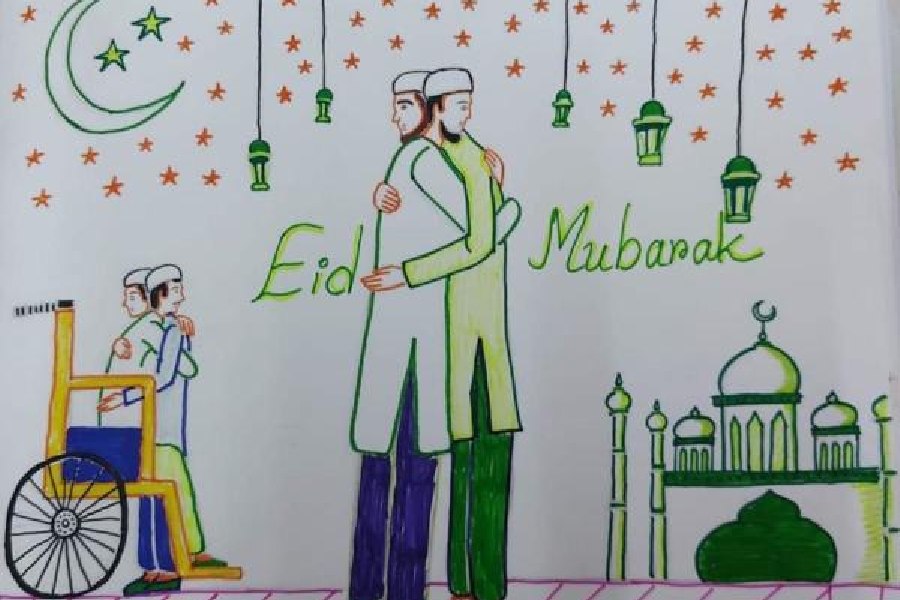A painting by a student with autism grabbed teachers’ attention during Eid celebrations at the Indian Institute of Cerebral Palsy. The theme of the painting was Eid and the painting showed a person in a wheelchair exchanging greetings with another person.
The person in the wheelchair is his friend, the student later told his teacher.
“Why did you draw this? What was going in your mind, when you drew this?” a teacher asked the senior student when she saw the drawing.
“I thought of my friend (who is in a wheelchair and has cerebral palsy) when I painted this,” he said. While he spoke, the friend in question had a heartwarming smile on his face.
While the boy who came up with the painting is a Hindu, his friend is a Muslim.
During the Eid celebration at the Indian Institute of Cerebral Palsy, some spoke about the festival, others talked about the day-long fast and some others made drawings.
The painting in question spoke of inclusion at various levels, said teachers.
“The drawing speaks about friendship, social inclusion and the unifying power of faith,” said Madhumita Dasgupta, deputy head of training and human resource development.
“It’s a common perception that people with autism have a challenge in being socially communicative. But this student has overcome that and used his imagination to send a strong message to the public at large,” said Dasgupta.
Both the painter and his friend are students of NIOS (National Institute of Open Schooling) at IICP.
“The drawing shows that our children (those with disabilities) can participate in social events. This is a picture of Eid, but it could have been any occasion, for instance, Durga Puja. Our children can and have the right to take part on every occasion with others,” said Sonali Nandi, director and chief operating officer, IICP.
“They cannot be left out of anything and inclusion has to be practiced and not just spoken about,” said Nandi.
The drawing depicts acceptance and respect, said teachers at IICP.
It also sends a message to the mainstream schools to practice inclusion and include children with disabilities in their classrooms, said those working with individuals with disabilities.
“The more people see people with disabilities around them, the more accepting they will become,” said Dasgupta.
However, there are some disabilities like autism or learning disabilities, which might not be visible. Still, society has to be more sensitive and accepting of them, too, said those working with individuals with disabilities.
